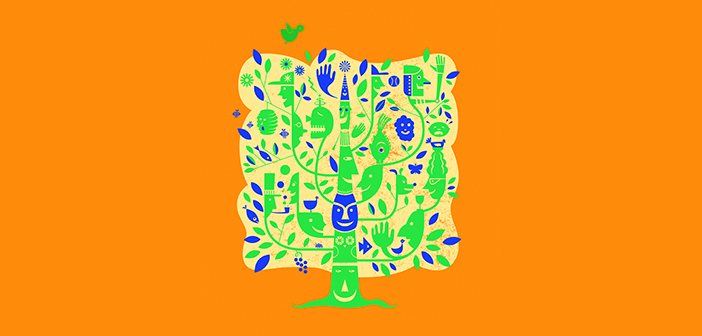Beyond the bonds of companionship, humans and animals are inextricably linked.
A woman brought her two cats to the veterinarian, worried about their lethargy, vomiting, and anorexia. The initial workup didn’t reveal much aside from anemia. The veterinarian ordered a few more rounds of tests, which eventually revealed that the cats had extremely elevated blood lead levels. Unfortunately, one of them died from the toxic levels of lead.
For most veterinarians, their responsibilities end there: they aren’t required to report elevated blood lead levels in animals to public health authorities. Even in pediatric patients, the lead level reporting requirements vary from state to state. But in this case, when the cats’ owner learned the test results, she was able to get tested as well. It came back as five times above normal.
This was all the more alarming because she was pregnant. It turned out that in preparation for her baby’s arrival, the woman had been stripping old paint to redecorate the nursery. The lead-laden dust likely settled on the cats’ fur, and as they groomed themselves, lethal levels of lead accumulated in their blood stream. Sadly, the felines were a sentinel for the environmental toxin, but the early detection prevented further tragedy.
This is merely one example of how human, animal, and environmental health are intricately linked, forming the basis for One Health. One Health is infused into many courses. For my final paper I wrote about Nipah virus, a pathogen discovered in Malaysia in 1998. Fruit bats are a natural reservoir for the virus, and new pig farms encroaching on bat habitat brought human, livestock, and wild animals into closer proximity, inciting a spillover event. The epidemic had local and international economic consequences: 1 million pigs were culled with no financial compensation to farmers, and importation of Malaysian pigs was temporarily banned. One Health provided a framework to weave infectious diseases, virology, animal behavior, ecology, climate change, international trade, and economics together into a cohesive narrative about the emergence of Nipah virus. I was enthralled by this new paradigm, and eager to seek out other examples of One Health in practice.
In medical school I was selected to be the human health domain student representative to the executive board of the One Health Commission, a nonprofit that creates networking opportunities between professionals in various fields. I also founded the student group One Health at Brown, the first One Health group at any medical school. We hosted lectures on non-verbal communication by the Roger Williams Park Zoo vet, and joint animal vaccination and preventive health clinics with the Providence Animal Rescue League in low-income housing complexes. We piloted a program with community organizations that matched formerly homeless individuals with companion animals to promote housing stability.
In my fourth year I worked with Peter Rabinowitz, MD, MPH, at the University of Washington’s Center for One Health, to create a clinical One Health elective in Seattle to explore its relevance in everyday practice. I observed surgery on a gorilla, with both veterinarian and physician consultants; developed an animal exposure history tool and tested it in an occupational health clinic; and discussed compassion fatigue with animal lab workers.
I had some of my most poignant experiences as an observing medical student in a free veterinary clinic. One woman brought her dog for a trauma evaluation, as she suspected that her daughter’s boyfriend was abusing it. As the veterinarian began her exam, I had many additional questions: did her daughter feel safe in the relationship? Did they all live together? Were there children involved? Studies have shown that interpersonal violence can first manifest as animal abuse—and in fact, medical students are taught that animal abuse can be a sign of conduct disorder. Yet veterinarians are not mandatory reporters of interpersonal violence.
There were no social workers or human health professionals at the clinic who might have addressed these concerns. Furthermore, there is no platform for physicians and veterinarians to communicate about shared health hazards or ailments for their respective patients, or to collaborate with urban planners or ecologists to address the effects of the environment on these populations’ health. But there is much to be gained by creating those connections.
I’m excited to head back to Seattle to train as a family physician at Swedish Cherry Hill. I plan to carry the One Health approach with me—like taking a thorough animal exposure history for all my patients, whether at home, work, or play. A similar history-taking checklist could easily be incorporated into Doctoring courses. In fact, many of us already apply One Health without labeling it as such. For example, during my pediatrics and infectious disease rotations, physicians would ask about animal exposures, particularly outdoor pets, who could carry ticks inside and expose their owners to Lyme disease. Not only can asking about Rover be a great way to establish rapport with a patient, it can give clues to disease exposures or even be a way to broach more sensitive issues such as mental health.
During my last session at the free vet clinic, the line snaked around the block as people waited patiently for the clinic to open. I tagged along as the veterinarian triaged and identified sicker (animal) patients. As we walked along she asked, “Anyone sick?” A few people teasingly yelled out, “Yeah, me!” Perhaps someday soon, we’ll be able to address both patients’ ailments together.




